- Quick Read
- Deep Read ( 8 Min. )
Monitor Daily Podcast
- Follow us:
- Apple Podcasts
- Spotify
- RSS Feed
- Download
TODAY’S INTRO
Mapping America through 1,001 novels
 April Austin
April Austin
When Americans travel, they see mountains and valleys and oceans. When Susan Straight travels, she sees novels. As she passes through regions of the country on one of her epic road trips, she views people and landscapes through the lens of literature.
Growing up, “Books were this huge deal to me, and books were how I learned about America,” she says in a video interview. Ms. Straight, a professor of creative writing at the University of California, Riverside, started a project – just for fun – to create a literary map of the United States. And she didn’t simply plunk a marker down in the middle of a state and call it good. Instead, using Google Maps, she pinpointed the places where each of the novels was set. If she wasn’t certain, she contacted the authors.
“I tried to find exact locations for everything,” she says. “Here’s the 7-Eleven or here’s the campground in Alaska. That was super fun.”
She calls her project 1,001 Novels: A Library of America.
Beyond the map’s cool factor, the featured novels offer insights into the people of a particular place. Ms. Straight says her literary map rejects red-state/blue-state divisions in favor of human empathy and understanding. “If you want to know how somebody in Alabama feels, read one of the books set in Alabama,” she says.
Ms. Straight is also a collector of stories as she travels, including the ones she hears from gas station attendants, truckers, and truck stop servers. “America is an amazing land full of storytellers,” she says.
She’s also aware that some people would find her compulsive need to map novels slightly, well, obsessive. She says with a laugh: “It was really crazy that I spent five years of my life doing this!”
Share this article
Link copied.

Help fund Monitor journalism for $11/ month
Already a subscriber? Login

Monitor journalism changes lives because we open that too-small box that most people think they live in. We believe news can and should expand a sense of identity and possibility beyond narrow conventional expectations.
Our work isn't possible without your support.
Get a job: After 100 years, states loosen child labor laws
What does it mean to have a childhood? As both red and blue states loosen child labor laws, Americans are debating questions that last came up at the beginning of the 20th century.

Since America’s rise as a global industrial power, the country’s use of child labor has only moved in one direction: less of it. Strict regulations and requirements around the jobs and hours minors can work have become the norm in a country where, a little more than a century ago, millions of children labored daily in fields and factories.
Led by state governments, a nation that saw children as necessary participants in the household economy shifted to a nation that saw children as valuable democratic citizens in need of education. And while child labor has never completely disappeared, it has diminished to a supplement of American childhood, not its defining feature.
But is that now beginning to change? For the first time in history, the United States is engaged in a nationwide discussion over relaxing rules around children’s work. States are again leading the way, with legislatures in red and blue states alike debating – and passing – laws expanding the hours and kinds of settings minors can work in.
While there is nothing to suggest children will be moving en masse from schools to factories and slaughterhouses, the current push to relax those regulations has historical echoes. Today isn’t the first time there’s been a moral panic over parents’ rights or a Supreme Court skeptical of regulations. What will happen next is unclear, but the historical record is informative as America wrestles with questions it hasn’t debated for over a century.
Get a job: After 100 years, states loosen child labor laws
Since America’s rise as a global industrial power, the nation’s use of child labor has only moved in one direction: less of it. Strict regulations and requirements around the jobs and hours minors can work have become the norm in a country where, a little more than a century ago, millions of children labored daily in fields and factories.
Led by state governments, a nation that saw children as necessary participants in the household economy shifted to a nation that saw children as valuable democratic citizens in need of education. And while child labor has never completely disappeared, it has diminished to a supplement of American childhood, not its defining feature.
But is that now beginning to change? For the first time in history, the United States is engaged in a nationwide discussion over relaxing rules around children’s work. States are again leading the way, with legislatures in red and blue states alike debating – and passing – laws expanding the hours and kinds of settings minors can work in. Similar bills have also been proposed in Congress.
- An Arkansas law, passed in March, eliminated age verification and governmental permission requirements for employers hiring minors.
- A New Jersey law, passed last year, extended the number of hours a minor can work per week to 50.
- In Iowa, a law enacted earlier this year permits children age 14 and older to use non-power-driven tools, and to work in kitchens and have “momentary work” in freezers and meat coolers.
- A Washington state law, passed in April, permits 18-year-olds to work in certain 21-and-older establishments, such as bars.
While there is nothing to suggest children will be moving en masse from schools to factories and slaughterhouses, the current push to relax those regulations has historical echoes. Today is not the first time there’s been a moral panic over parents’ rights or a U.S. Supreme Court skeptical of regulations in general. What will happen next is unclear, but the historical record is informative as America wrestles with questions it hasn’t debated for over a century.
There was “a shift around, ‘what is childhood?’” in the early 1900s, says Beth English, executive director of the Organization of American Historians.
“It was, you have to be a participant in the household economy, and it shifted to, you have to be educated and able to participate in democracy,” she adds.
“We’re at [another] pivot point right now, and which way are we going to go?”
Citing a post-pandemic labor shortage and, in some cases, a desire to strengthen parents’ rights, the wave of legislation in recent years ranges from eliminating youth work permit and age verification requirements, to allowing minors to work longer hours during the school year, to allowing teenagers to serve alcohol. Some laws increase the penalties for violating child labor laws – typically a civil violation punished with fines – and indeed, the effort to relax child labor regulations comes as the Department of Labor has reported a significant increase in federal child labor violations in the past decade. The federal government is also investigating reports of widespread and unlawful use of unaccompanied migrant children in workplaces around the country.
Critics say the trend reflects a desire to hire more low-wage workers, at the short-term risk of children’s health and safety and the long-term risk of poorer educational outcomes. There’s a reason child labor regulations haven’t been touched in over a century, they argue, and it’s because they work.
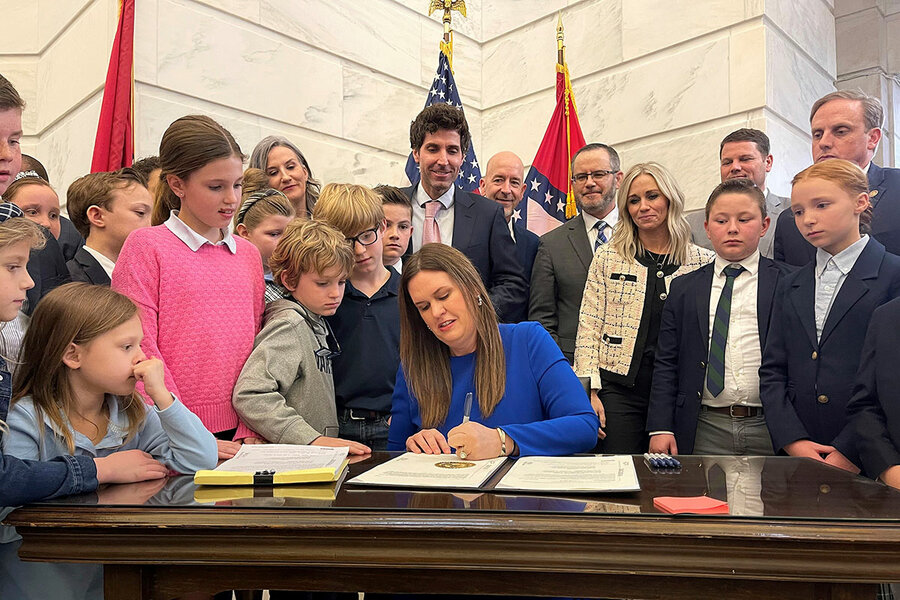
“There’s really no evidence backing these policy decisions to weaken” child labor regulations, says Nina Mast, an analyst at the left-leaning Economic Policy Institute. ”The standards we have in place, they should only be strengthened, not rolled back.”
Lawmakers and advocacy groups pushing to relax these regulations didn’t respond to the Monitor’s interview requests, but a statement from Rep. Dusty Johnson, the Republican congressman for South Dakota, announcing a bill that would loosen federal limits on work hours for 14- and 15-year-olds illustrates why some believe some marginal changes are needed.
“If a high school student can play in a football game until 9 p.m., or play video games late into the evening, they should also be allowed to hold a job if they wish to,” he said. (The bill has since been withdrawn.)
Roots of child labor
It used to be not just normal for America’s children to work, but expected. When the country was mostly agrarian, children would help their families with farm work. And as the country industrialized and urbanized, child labor moved from the fields to factories and textile mills. The 1900 Census reported that about 2 million children were working across the United States.
By then, a reform movement had begun to gain traction. States, particularly in the North where child labor was most prevalent, started passing laws restricting it. By the turn of the century child labor had become a national issue. The National Child Labor Committee, formed in 1904, led efforts to pass federal legislation regulating children’s work.
For decades, these efforts were unsuccessful. Mill and factory owners opposed increased regulation, and many parents helped their children circumvent state regulations so they could boost the family’s income. But perhaps the toughest hurdle for reformers to overcome was the Supreme Court. Congress passed laws regulating child labor in 1916 and 1919, but the justices declared both to be unconstitutional.
Those rulings were among many issued by the high court during its so-called Lochner era, in which the justices often struck down laws – particularly President Franklin Roosevelt’s New Deal policies – thought to inhibit business and commercial interests. In 1937, the justices reversed course after Roosevelt threatened to pack the court. The Supreme Court upheld the Fair Labor Standards Act (FLSA) in 1938, which significantly restricted the kinds of jobs and number of hours children could work.
The FLSA, combined with World War II and post-war economic boom, “make it such that children aren’t actively working in industry in the kinds of numbers we used to see,” says Dr. English. Between 1900 and 1945, the number of children graduating high school increased from 6.4% to 51%.
The FLSA has set the floor of child labor standards in the U.S. ever since, but it has always left states wiggle room. The law doesn’t restrict the hours that employees age 16 and older can work, for example, but most states do. While it prohibits minors from working hazardous jobs, minors can work those jobs if it’s a fellowship-style program.
“There’s a lot of nuance there,” says Landon Jacquinot, a policy associate at the National Conference of State Legislatures. “Where states have been loosening those regulations is in those gray areas where it’s a bit less clear.”

Parents’ rights
Indeed, none of the legal changes in the past few years are sending children back into coal mines. But there are historical echoes in the current push to relax child labor rules.
The current Supreme Court, for example, disfavors efforts to regulate business and commercial interests. And parents’ rights is once again at the forefront of debate.
Courts broadly considered children the property of their parents in the post-Civil War United States, and opponents of early child labor laws would argue that they violated parental rights, according to the U.S. Bureau of Labor Statistics. Now, parents’ rights – which have animated criticism of public education in recent years – are being cited in the child labor space again.
Families “want more of the freedom that lets our children flourish,” wrote Nick Stehle, vice president of the Foundation for Government Accountability, a conservative think tank that has lobbied to relax child labor laws around the country, in a Fox News op-ed in March.
Youth workers are also needed to help address a post-pandemic labor shortage in the country, supporters say.
“Keeping a schedule, collaborating with others, discovering your skills and your shortcomings ... complement what you learn in the classroom,” said Mr. Stehle in his op-ed.
“Can anyone honestly say that American teenagers are more responsible and well-rounded now than they were 50 years ago?” he added.
Statistics in fact show that over the past four decades, the youth crime rates and teen pregnancy rates have declined continuously, while graduation rates in the U.S. have steadily increased to the highest on record in 2020.
The recent spate of bills also come at a time when the number of minors employed in violation of federal law almost tripled between 2013 and 2022, according to the Department of Labor. Some of the bills do add teeth to child labor enforcement, however. Arkansas created a criminal penalty – where civil penalties are most common – for employers who knowingly violate the law. A bipartisan bill in Congress would impose “stronger criminal penalties for repeat or willful violations,” reported Reuters.
There are historic echoes even when it comes to migrant labor. In 1870s New York City, “padrones” promised Italian parents apprenticeships for their children, only to force them into street labor and keep all their wages. The arrangement bears striking resemblance to the exploitation that migrant children are experiencing around the country, working to pay sponsors who helped them get into the country, according to a New York Times investigation.
Supporters of loosening child labor laws point to teenagers’ declining labor force participation in recent years, particularly a sharp decline in summer jobs reported by the Pew Research Center eight years ago.
But that may be a result of economic incentives shifting, data shows. As children have spent less time working in recent decades, they have spent more time in school. Recent studies have shown that education increases a person’s career earnings and reduces their risk of unemployment, and that working more hurts school success and completion.
While the recent spate of bills do loosen some restrictions on child labor, the changes are marginal – indeed marginal enough to pass in both Republican- and Democrat-controlled statehouses.
But policymaking at the state level can be, depending on your perspective, a momentum builder or a slippery slope. State-level child labor regulations, historians note, paved the way for federal action. Activists are concerned that the trend may now be moving in the opposite direction.
“A crux of a lot of the debate [150 years ago] was that child labor was necessary” given the state of the economy, says Dr. English. Today, in a post-pandemic economy, with low unemployment, high wages, and high inflation, “some people are saying it’s logical to employ children again.”
“The question becomes, what are the longer-term impacts of that on well-being, on education, on lifetime potential earnings?” she adds. The most important questions “might not be the work itself, but what are the ripple effects of that work?”

How one city stopped culture wars in their tracks
Day-to-day work building trust in the community set the stage for defusing the culture wars confronting Middletown’s public schools.

- Quick Read
- Deep Read ( 15 Min. )
-
By Courtney E. Martin Special contributor
-
Riley Robinson Staff photographer
In communities across America, the public comment period in school board meetings has morphed into yelling, and sometimes even physical violence, over national hot-button topics.
When residents of Middletown, Ohio, descended on the Aug. 23, 2021, school board meeting, the comment period became a complaint period – about mask-wearing and critical race theory.
“If we start relinquishing our rights to make decisions for our children, where does it stop?” one man asked.
Rather than respond, Marlon Styles, the district’s first Black superintendent, took detailed notes on what he was hearing, adding a note to himself: You gotta pick a fight against this if you want the kids to stay the main thing.
Next, he turned to a group of religious leaders with widespread respect in the community.
Their prescription? Remind the community that, no matter the disagreements over theology or pedagogy or even public health, all belong.
Along with the ministers, other ordinarily quiet supporters started speaking up at meetings. The Rev. Michael Bailey said, “Middletown is a strong city. It is strong because of our faith to love and respect one another. It is strong because of our diversity.”
A white doctor spoke of his great honor to treat the football team in his mask.
Others followed, meeting after meeting.
One public comment at a time, the frame on Middletown grew wider. The disagreements were still in the shot, but they hadn’t taken over the focus. The students still had that spot.
How one city stopped culture wars in their tracks
The police officer gives Marlon Styles’ driver’s side window two reassuring pats once he’s safely inside. Mr. Styles rubs his freshly buzzed head, takes a deep breath, and then fishes his keys out of his suit pants pocket and drives away from the school board meeting. It’s the latest he’s ever left – nearly 1 a.m. – and this time, unlike all the rest, he is not wondering how to get more community members involved. He is wondering how to grapple with a potentially toxic animus in his fairly harmonious town. The culture wars have just come home, and Mr. Styles, the first Black superintendent of Middletown, Ohio, has to figure out what to do.
In America, school boards have become something of a canary in the coal mine of democracy. Trust has been lost in our public institutions, including that most foundational of them: public schools. In a recent Gallup Poll, only 28% of Americans said they have “a great deal or quite a lot of confidence” in public schools.
It’s news to no one: School board meetings are broken. In cities and towns across the country, the public comment period has morphed into yelling, and sometimes even physical violence, over national hot-button topics like critical race theory (CRT), mask mandates, and basic recognition for transgender students. The National School Boards Association has fractured. In an official communication, the former executive director suggested that CRT-bashing and other strongly worded complaints might qualify as “domestic terrorism,” and most of the red states formerly in the association dropped out. In early October 2021, Attorney General Merrick Garland warned the FBI and federal prosecutors that the Justice Department would be responding to “a disturbing spike in harassment, intimidation, and threats of violence” toward school personnel and board members.
Some public servants are preparing for more conflict by wearing state-of-the-art bulletproof vests to meetings. But there are others, like Mr. Styles, who seek out the protection of the oldest technology there is: trusted relationships.
Every four years, the blinding political spotlight shines on Ohio. Presidential hopefuls cozy up with residents in diner booths, and cameras flash. In part, all this attention makes a lot of sense. As Ohio goes, so goes the country. Not just in terms of presidential victories (Ohio has picked the winner in all but three presidential elections since 1904), but also demographically (with the exception of Latino residents, who make up only 4.2% of the population). Ohio is as good a bellwether as any for America.
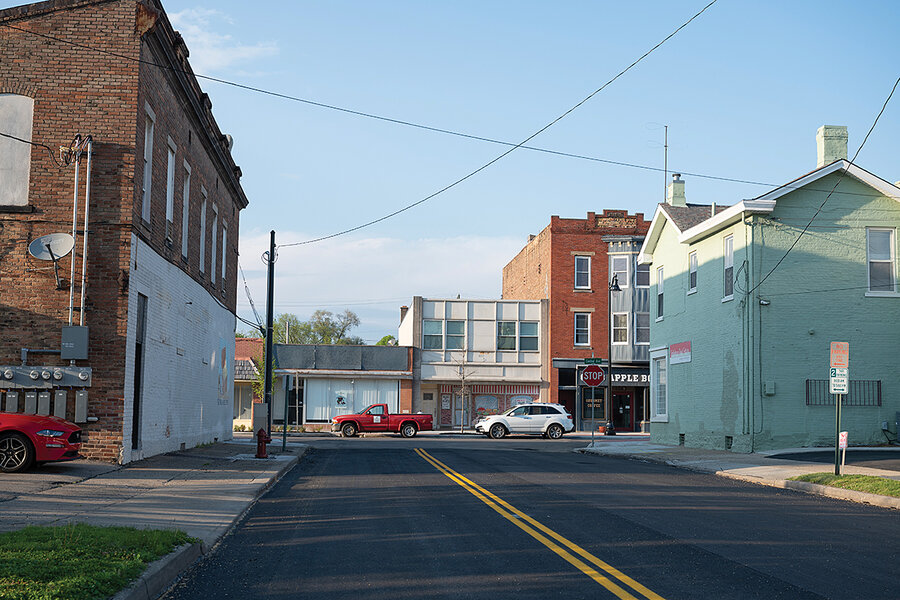
But noteworthy things happen in Ohio between presidential elections, too. Just ask Marlon Styles.
He was chosen as superintendent of Middletown City Schools in 2017 by a school board that felt its district needed an infusion of innovative thinking. Only 15% of Middletown residents have a college degree. The current public school system serves about 6,100 students, slightly more than half of whom are white; nearly 19% are Black, and roughly 16% are Latino. Almost all of them qualify for the free and reduced lunch program. With this kind of economic precarity, public schools wind up needing to address a host of basic needs, plus plenty of untreated trauma, on a daily basis, without enough resources or recognition. It’s easy for everyone to get disillusioned.
School board president Chris Urso explains: “We knew we needed a change. Trust had really fallen. We wanted a leader who was credible, creative, caring, charismatic, and had content knowledge. All the C words! And Marlon was the whole package.”
Mr. Styles was born and raised in Cincinnati – a 40-minute drive from Middletown. His mother was a receptionist at CGE Energy, and his dad drove a Butternut Bread truck. His older sister was the first in the family to go to college, something Marlon aspired to but it wasn’t a given. “I was never the smartest kid in class,” he readily admits.
He had a lot of energy, though, which he channeled into sports – basketball, football, and his favorite: baseball. Saturdays were spent at his maternal grandmother’s house; while eating Grandma Watson’s homemade vanilla ice cream at her kitchen table, he studied the art of relationships. Grandma Watson had a way of showing up for people, he says. If a family at the church lost their jobs or got a harrowing diagnosis, she would put out a quiet call and gather what they needed. She wasn’t the type to give advice or offer life lessons. “Her body at work spoke about the heart she had,” Mr. Styles remembers.

When it came time to go to college, Mr. Styles did get in, but he spent two years in remedial classes at Eastern Kentucky University before graduating from Thomas More University. He figured if he taught, then he could coach, so he enrolled in a teacher prep program.
He fell in love with the buzz of a classroom. Just like Grandma Watson, he liked sussing out what students needed and making it happen for them, motivating them, building them up. Eventually he earned a master’s degree and became a school principal. But Mr. Styles was rarely behind a desk. He still carried himself with an athlete’s confidence and contagious enthusiasm, whether he was passing out breakfast and shouting affirmations or talking quietly with a kid who was struggling.
His first mission as superintendent of Middletown City Schools was to “electrify the culture.” The city of about 50,000 people has a reputation regionally for economic struggle and heroin addiction – once named one of “America’s fastest-dying towns” by Forbes.
The district’s public relations director told Mr. Styles he needed to get on social media, which he did immediately. As he looked out on his nearly 400 employees during his first convocation, an idea popped into his head. “Pull out your cellphones,” he commanded. “No really, pull them out! Now take a few selfies with your favorite co-workers smiling and having fun, and post them online with #MiddieRising.”
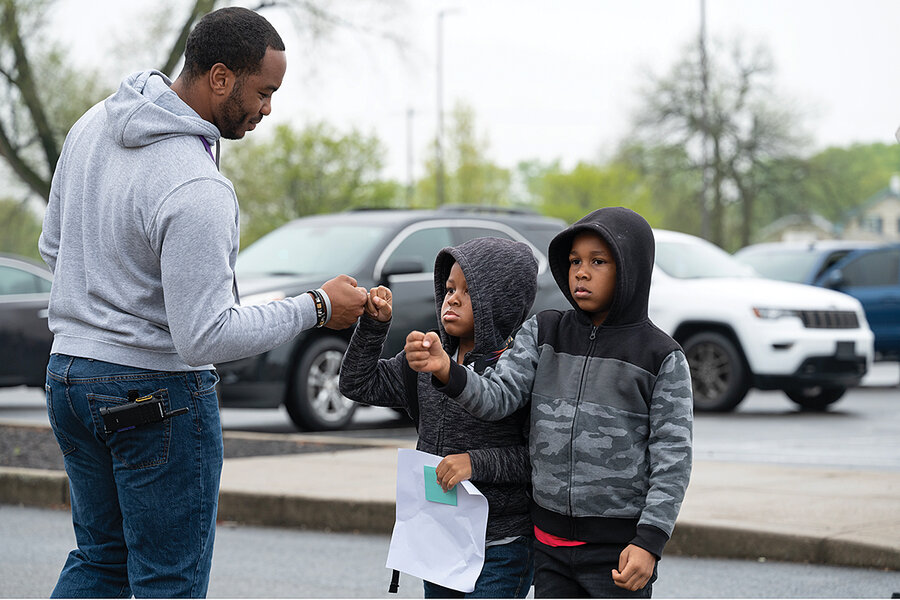
The crowd erupted in giddy laughter and threw their arms around one another. Before long, the campaign #MiddieRising became a rallying cry for the whole city. T-shirts were made, banners were hung, videos were produced showing students’, parents’, and teachers’ Middie pride.
Mr. Styles also formed a committee of community members who volunteered to meet quarterly to hear briefings on Middletown schools. Externally, they were called Key Communicators; internally, Mr. Styles thought of them as his “positive gossipers.” He explains, “Every time they left a meeting I would say, ‘Now go out and tell five people in your network something the district is doing to serve our kids.’”
As school board meetings dissolve into screaming matches across the country, this kind of transparency is an anomaly. Deborah Houser, who was assistant superintendent under Mr. Styles and now leads the district, explains: “Marlon really taught us that you have to tell your own story so others don’t tell it for you.”
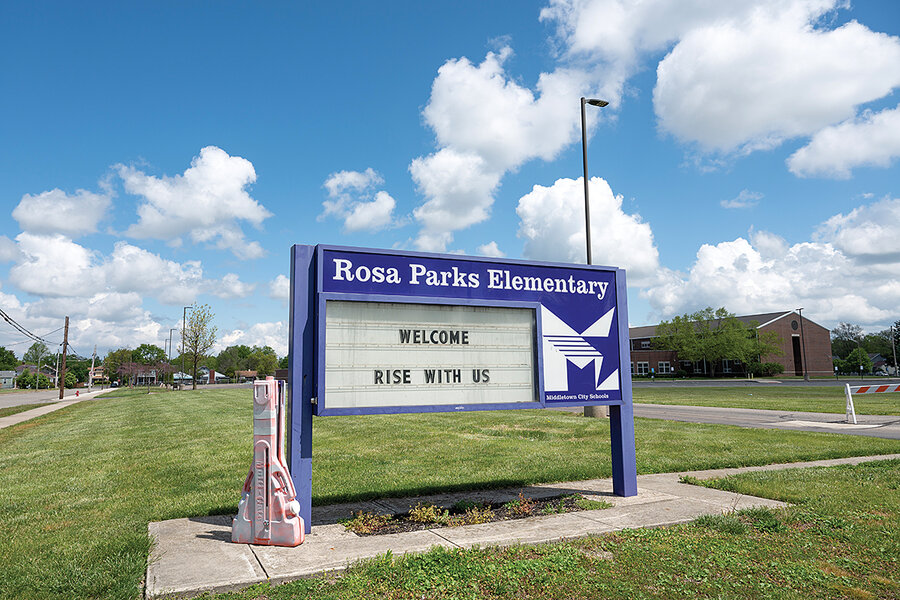
The pandemic was a strain on every community, of course, but Middletown City Schools, with Superintendent Styles’ indefatigable optimism and novel strategies for stoking morale, seemed to be mostly sticking together. Until Aug. 23, 2021.
The meeting opened, like always, with the Pledge of Allegiance. The whole room of Middies stood and faced the drooping symbol of their country.
A word from the end of the pledge – liberty – was on the agenda. Or at least that’s how some Middies saw it. A white man named Mike Conner rose to his feet during the public comment period: “I didn’t know I’d be the first to speak. ... This is not what I’m suited for,” he admitted.
Then something changed in his demeanor. He stood up straight, ran a hand through his military-short haircut, and went on: “I’m more suited for the battlefield. Currently, this room, this meeting, is our battlefield. Right now, what is at stake is the physical and mental health of our children.”
There were about 40 people in person on that late summer night, an unusually high turnout. On Facebook, too, where the meeting was being streamed live, comments were coming in fast and furious. The school year had started with a masks-optional policy, but then COVID-19 rates in the community quickly spiked. Kids still couldn’t be vaccinated. When Mr. Styles walked back the policy – announcing that masks would be required until rates went down – some Middies balked. Like Mr. Connor: “These masks are being forced on our children. ... If we start relinquishing our rights to make decisions for our children, where does it stop? We can’t allow this to happen.”

The outrage picked up momentum from there. But it wasn’t just a mask mandate that people were worked up about.
Kent Keller II approached the mic in a black hat with “1776” emblazoned on it. Someone on Facebook commented: “Keller Boys are back. Kent is doing his mama’s bidding.”
Mr. Keller is one of two sons of Candice Keller, a former state representative for the 53rd District who is known for stirring up controversy at tender moments. Following a mass shooting in Dayton, Ohio, on Aug. 4, 2019, in which nine people were killed, she took to Facebook and blamed “drag queen advocates,” “homosexual marriage,” and “professional athletes who hate our flag and National Anthem,” among others.
Mr. Styles had become the focus of the Keller family’s wrath. Mr. Keller quoted the superintendent’s recent explanation at a board meeting of a “culturally responsive” approach to discipline that was a small part of a newly unveiled six-year strategic plan for the district. “This woke CRT ideology is not education. It’s indoctrination,” Mr. Keller warned. “You’ll give whatever fancy, flowery names you can to cover it up. But we all know it’s CRT. You’ve awoken grassroots parents, mobilizing a movement to bring back common sense and stop division in this country.”
Rather than respond, Mr. Styles pulled out his laptop and began taking detailed notes on what he was hearing.
When the board took a recess, the enraged Middies stood up and slowly made their way toward the door, seemingly disgruntled that the mask mandate hadn’t been shredded on the spot.
Before shutting his laptop for the night, Mr. Styles wrote a note to himself at the top of his spreadsheet: You gotta pick a fight against this if you want the kids to stay the main thing.

Communities often talk about such moments as if there’s a clashing of two distinct, opposing arguments. But so much of the school board meeting dysfunction sweeping the country is as much a battle over symbols as substance.
For some in Middletown, a mask felt like oppression. For others, interdependence. One commenter on Facebook wrote, “This meeting and the comments prove this: human beings will not even do the bare minimum to look out for one another.”
For some, the words “culturally responsive” and “equity” sound like resurrecting a history best left buried. For others, longed-for repair. One white mom who expressed concern about the curriculum in private meetings with district officials says she feared her son’s interracial relationships would be poisoned by dwelling on slavery. One day they would be back-slapping, volleyball brothers, and the next, ancestrally destined enemies, she worried.
What does it feel like for this community to hear these words spoken by the first-ever Black leader of the district? For some, it’s disempowering. For others, a relief.
A video clip of Mr. Styles saying “culturally responsive” and “equity” circulated after the contentious school board meeting. So Mr. Styles made a short video of his own, clarifying what those words mean, and posted it to the district’s Facebook page. Vitriolic comments streamed in. Mr. Styles invited the outraged Middies to his office to talk through the facts. But the facts weren’t cutting it. “I realized,” Mr. Styles explains, “that for the first time in my tenure as superintendent, the best thing I could do was shut up.”
Mr. Styles needed help. And he knew where to ask for it. At the next breakfast meeting of the Middletown Area Ministerial Alliance, a group of religious leaders with widespread respect in the city, he showed a clip of the previous school board meeting and asked a question: “Is this representative of our community?”
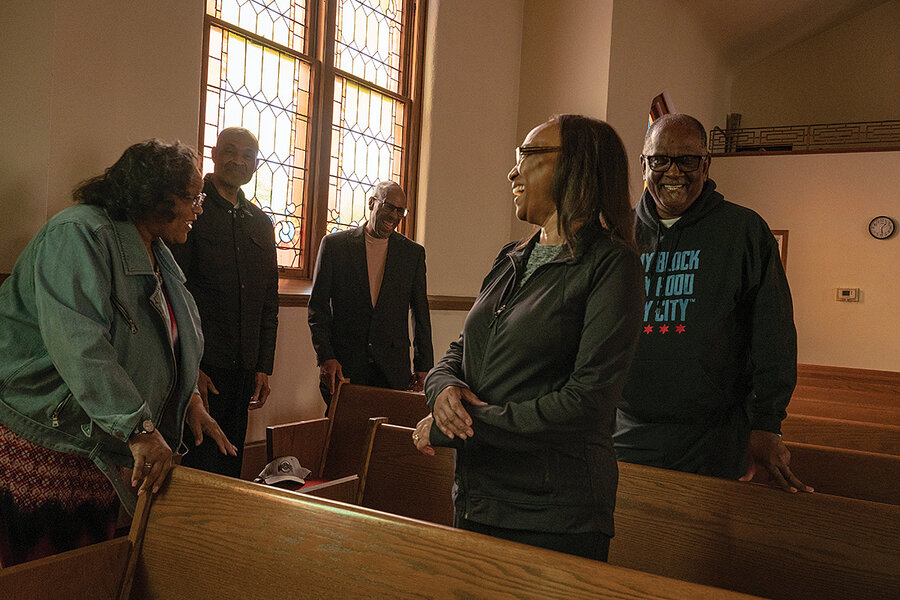
The ministers’ response was an immediate and collective no. Their prescription? Remind the community of its own capacity to keep the main thing as their main thing. In this case: the kids. Remind them that, no matter the disagreements over theology or pedagogy or even public health, all belong.
Ministerial alliances are not unique to Middletown. Throughout the 20th century, many American towns enjoyed the connective tissue that these typically Christian, but ecumenical, groups provided.
In Middletown, what had originally been segregated alliances were now a single, integrated one. Pastor John Wagner, a white Methodist, openly acknowledges what he learned from his father, a freedom rider in the 1960s, and is learning from his colleagues. “I’ve been getting educated by younger friends,” he says. “I know what I was taught growing up about U.S. history was actually European American history.”
Mr. Wagner sees talking openly and comprehensively about slavery as a critical correction to the American record, but he also wants the history of class solidarity, particularly in Middletown, to have a place in the curriculum. J.D. Vance put Middletown on the map with his bestselling memoir, “Hillbilly Elegy,” but many here feel it misrepresents the true spirit of the community and its struggles and strengths. There is power, not just “white power” but genuine, relational power – labor organizing against the city’s big steel factory and generational intertwinement, care, and mutual aid – that has been forgotten, he explains. “I think we can hear it all and hold it all,” he says.
Pastor Scotty Robertson, another member of the alliance, is about half Mr. Wagner’s age. Born in Man, West Virginia, in the ’80s, he was raised to revere white Appalachian masculinity and vote Republican. He fell in love with Jesus and books – eventually pursuing a master’s degree in divinity at Northern Seminary, near Chicago. There, he learned about structural racism.
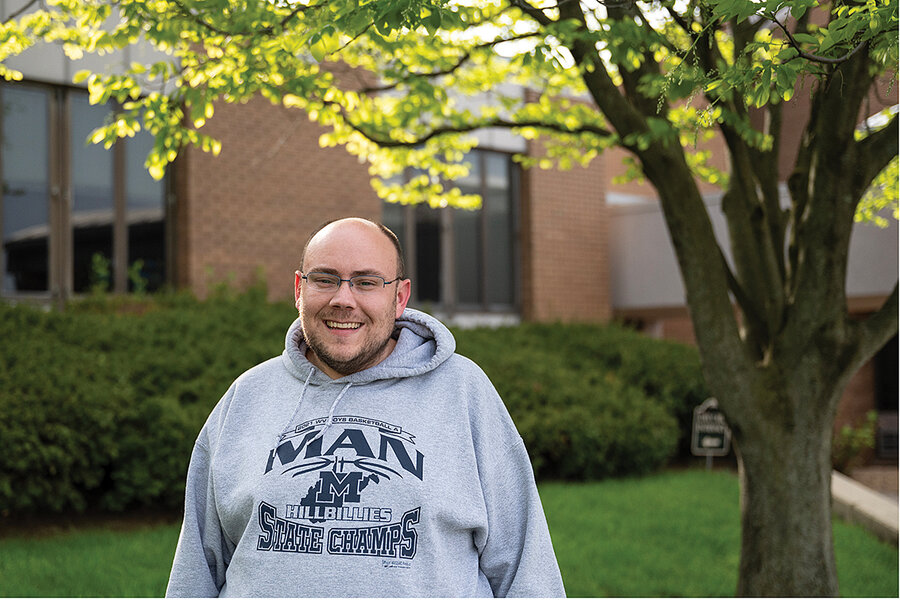
In his office, tucked behind the light-filled sanctuary where he preaches, is a screensaver displaying a portrait of “The Golden Girls.” Dr. Robertson might be likened to Dorothy Zbornak, played by Bea Arthur: wicked smart, palpably irritated with hypocrisy (especially among Christians), and deeply compassionate. “At the end of the day, I think what I care most about is that people just tell the truth,” he says.
At first, the Sept. 13, 2021, school board meeting felt as hot as the last one. Candice Keller snagged the first comment spot, dramatically reading prepared remarks that, while mostly ideological in nature, sounded vaguely legal in tone. When her three minutes were up, she sat down with a flourish next to one of her sons in the front row.
But while many of the same people from the earlier meeting were there to do battle, the comment period morphed into a moment of witness instead.
The Rev. Michael Bailey, a Black man in a smart, gray plaid suit jacket, purple collared shirt, and purple mask testified next: “Middletown is a strong city. It is strong because of our faith to love and respect one another. It is strong because of our diversity. Last but not least, it is strong because our students are resilient. ... As a watchman on all of this strong city, even though our cultural values are under attack, my co-laborers of faith in Middletown are committed to extend our hands and our feet to support this institution to work together to do what’s in the best interest of our children.”
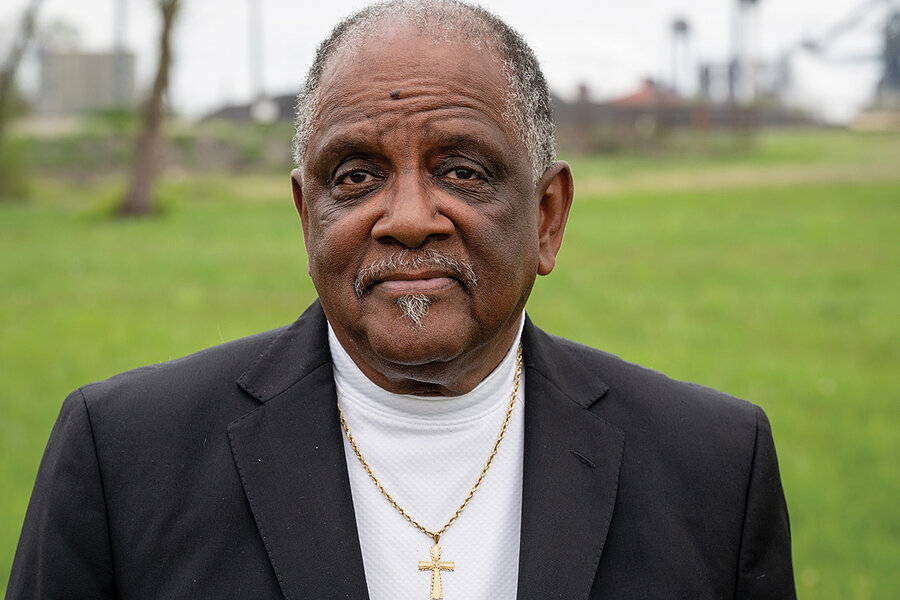
Mr. Wagner, with his bald head shining in the conference room lights, spoke, too: “I would encourage the community to support elected leaders as much as possible, not without some criticism, legitimate criticism, but understanding these are complex issues and there needs to be nuance.”
An older Black man suggested naming the new wing of Rosa Parks Elementary School after a first grade student, a little white boy with big round glasses, who had tragically died at the hands of his own mother, so Middletown never stops talking about the scourge of child abuse. His voice broke as he spoke.
A white woman with a pixie haircut spoke about being immunocompromised and urged people to think of the most vulnerable. A white doctor spoke of his great honor to treat the football team in his mask. A white local businessman, a member of the “positive gossipers,” talked about how excited he was to hire well-prepared Middies and what a great job he thought the district was doing with Middletown’s young people.
It was as if, one public comment at a time, the frame on Middletown grew wider and wider and wider, the symbols more varied and beautiful. The disagreement over masks and history was still in the shot, but so were “watchman” Michael Bailey, and John Wagner calling for nuance, and the town doctor, and even, tragically, dead 6-year-old James Hutchinson.
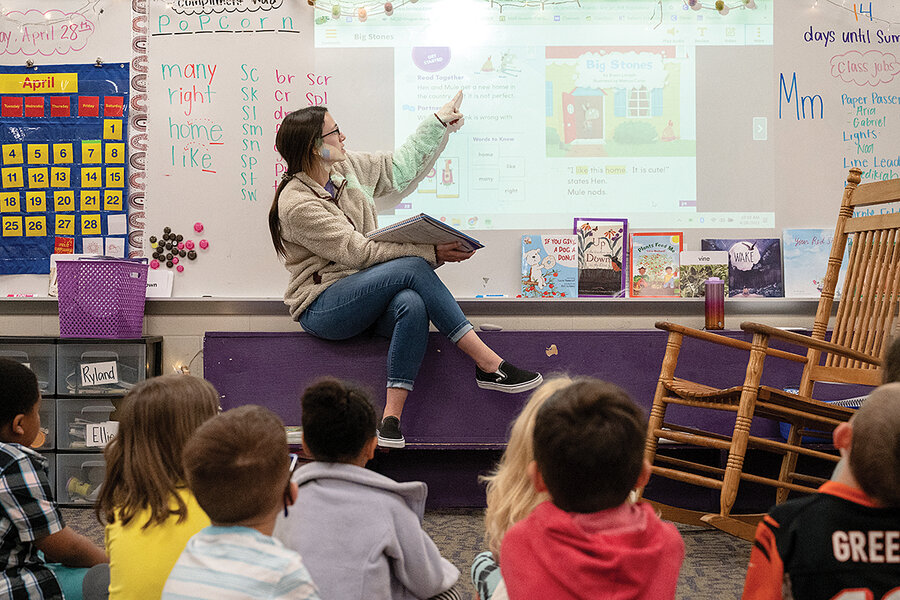
The Middletown Area Ministerial Alliance, as well as “positive gossipers,” showed up en force to eight school board meetings in a row and kept widening the frame.
They told little, textured stories of community. They told jokes. They quoted Scripture.
Dr. Robertson spoke at multiple meetings. On Sept. 27, 2021, he shared: “I’ve been thinking back to the Old Testament story of Queen Esther and how she sensed a calling in her life to ... lead the way for her people. ... She says, ‘I believe I was brought to this position in this kingdom for such a time as this.’ ... I truly believe, in my spirit, that God has appointed Marlon, the school board, and these teachers to be active in the lives of our students for ‘such a time as this.’”
The Rev. Connor Thompson, a white man in a Kiwanis cap and a T-shirt, trudged up to the mic from the back of the room one night and told those assembled, “I’m fresh off – dusty tennis shoes and all – the Amanda Elementary playground project, which is beginning day five of our three-day build.”
The crowd chuckled. Mr. Thompson went on: “No one saw that there was no real earth underneath that grass until we peeled it back.”
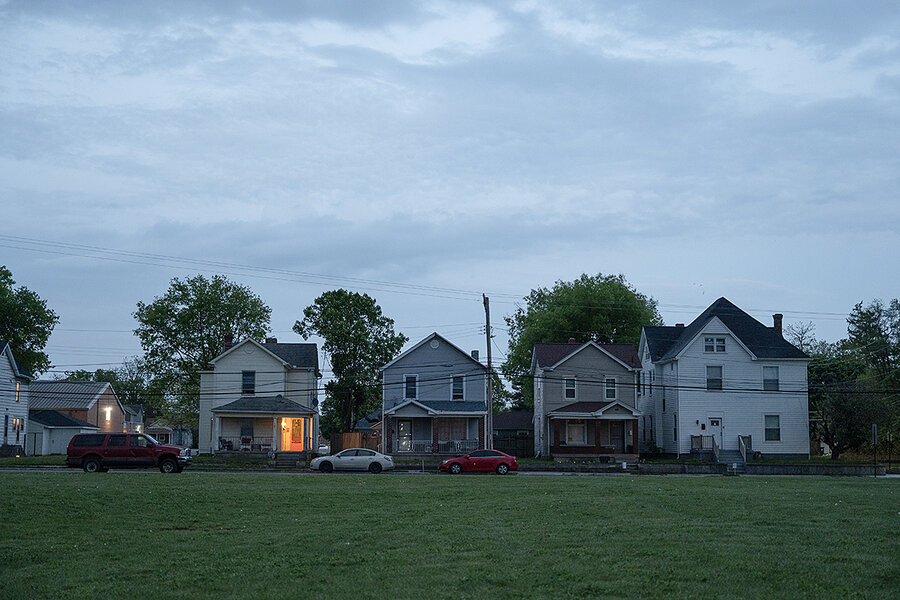
The so-called culture wars, these battles over symbols that hold so much hurt and history, are an American excavation. In some communities – where leaders have seeded transparency and trust, where beloved communities, like the Middletown Area Ministerial Alliance, do the unglamorous, daily work of gathering and getting to know one another – there is solid ground. And where that is the case, the community can come together despite disagreement because there is real earth there. Something to stand on.
On Aug. 23, 2022, a year after Mr. Styles was escorted to his car by police officers, he sent a letter to the ministers of his city thanking them for their support in that difficult moment. In part, it read, “The question that kept me up at night was how could I, as a superintendent, lead and inspire unity when my district is under attack? I realized that you can’t, but you can ask for help. I decided to take action by stepping back and leaning into the community leaders whose life work is to serve others.”
With another school year just having ended, the peace remains. Mr. Styles retired from the district in February. He now travels the country advising other superintendents on how to create what he calls “learner-centered environments.” When asked what advice he would offer other leaders facing similar turmoil, he says, “Every school community has a quiet majority. Authentically and genuinely reach out to them.”
Then he takes a deep breath and adds guidance a mentor gave him: “Sometimes you gotta sit in the fire. But never let yourself become it.”
Courtney E. Martin is the author of “Learning in Public: Lessons for a Racially Divided America From My Daughter’s School” and a popular Substack newsletter called Examined Family. This article was reported with support from University of California, Berkeley Greater Good Science Center for its initiative on intellectual humility.

In Germany’s east, a hard rethink about once-close Russia
How does one respond when a once-trusted friend turns out to be an aggressive threat to its neighbors? That’s what eastern Germans are wrestling with after Russia’s invasion of Ukraine.

- Quick Read
- Deep Read ( 6 Min. )
Katja Hoyer was 4 when the Berlin Wall fell and Germany was unified into the young republic it is today. Today, the east-west geographical divide in Germany is seen in museum exhibits, but also in the familiarity with all things Russian of eastern Germans of a certain age.
“Many East Germans don’t see Russians as ‘one block of people who follow Putin,’” explains Ms. Hoyer, who recalls visiting St. Petersburg as a girl on a publicly funded trip. “It makes Russians real people as opposed to faceless enemies – it’s more difficult to see people you actually know as enemies.”
Prior to the Ukraine war, half of eastern Germans wanted closer ties to Russia. Russia’s invasion of Ukraine flipped that sentiment on its head: Now 82% of Germans – including 73% of eastern Germans – see Russia as the biggest threat to world peace in the next few years.
But while the war in Ukraine brought a sudden German foreign policy shift, the affinity for Russia doesn’t disappear overnight, says ethics professor Joanna Bryson.
“Being political opponents and still having a cultural idea of each other has always been the case,” she says. “It’s not a contradiction, even though it sounds contradictory. ... It’s a dialectic that you just endure.”
In Germany’s east, a hard rethink about once-close Russia

One of the most widely distributed Russian novels of all time was required school reading for a young Katja Hoyer.
Growing up in East Germany, Ms. Hoyer remembers being impressed by the heroic protagonist of “How the Steel Was Tempered.” The Russian main character, Pavel, was maimed while fighting for the Bolsheviks, and the forging of his character into figurative steel while serving the communists was a “classic Russian socialist novel. You read in Russian about a Russian who’s going through a tough time in their lives,” recalls Ms. Hoyer. It made an impression, as it did on many of her fellow East German schoolmates at the time.
Ms. Hoyer was 4 when the Berlin Wall fell, and Germany was unified into the young republic it is today. Today, the east-west geographical divide in Germany is seen in museum exhibits, but also in the familiarity with all things Russian – including the language, culture, and people – of eastern Germans of a certain age.
“Many East Germans don’t see Russians as ‘one block of people who follow Putin,’” explains Ms. Hoyer, who recalls visiting St. Petersburg as a girl on a publicly funded trip. “It makes Russians real people as opposed to faceless enemies – it’s more difficult to see people you actually know as enemies.”

Prior to the Ukraine war, half of eastern Germans wanted closer ties to Russia, a desire reflected in the highest levels of leadership. Russia’s invasion of Ukraine flipped that sentiment on its head, galvanizing German public support for Ukraine. Indeed, now 82% of Germans – including 73% of eastern Germans – see Russia as the biggest threat to world peace in the next few years, according to Allensbach Institute research.
Yet a significant proportion of eastern Germans are still struggling to process recent events in light of a decadeslong familiarity with Russia. Just three decades after the fall of the Berlin Wall, this turn of events provides an opportunity to finally close the east-west divide for good, say political experts.
“Snobbery toward [eastern Germans] is certainly a huge problem. Surveys suggest two-thirds feel they are treated as second-class citizens,” says Ms. Hoyer, now a German British journalist and visiting fellow at King’s College in London. “Now we have the first generation of unified Germans, who never experienced the divide between East and West as an existential threat to their own state. Perhaps there’s a chance to try to bridge those differences.”
“Big brother”
Germany has a deep, complex relationship with Russia, marked by periods of cooperation as well as conflict. In modern times, most impactful to ties between the two countries has been the devastation of World War II, during which the Soviet Union lost more than 26 million people amid Nazi Germany’s brutal campaign in the country. The ensuing formation of East Germany as a socialist state and Soviet satellite then steeped generations of Germans in Russian language, culture, forms of government, and art.
“You learned Russian, you knew Russian literature, you sang Russian songs,” says Judith Enders, an eastern German political historian who teaches at the Alice Salomon University of Applied Sciences Berlin. “As little GDR, you always had to do what big brother said, and sometimes big brothers are nice and protective, and sometimes they’re really mean.”
Dr. Enders recalls childhood memories such as student exchanges in Russia, Russian soldiers throwing candies to East German children, and feelings of the Soviet Union being a provider of opportunities in education and life.
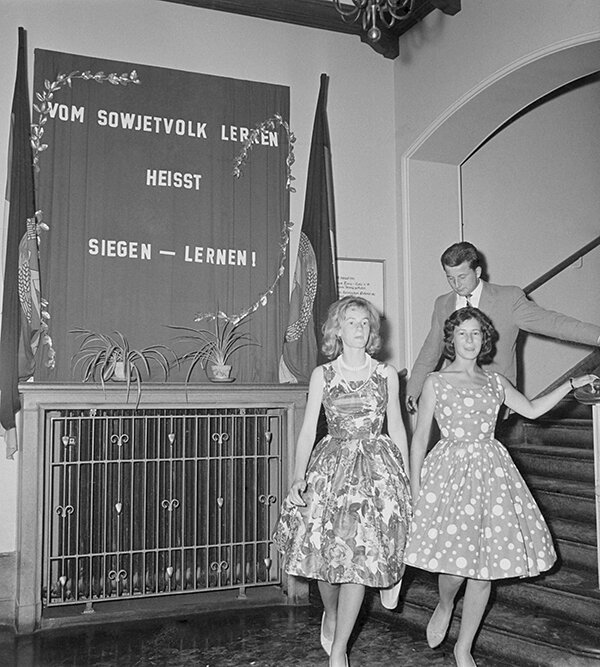
“For children also, the Soviets built the space station, and to me that was peace and community,” says Dr. Enders. “These are all the things that scurry around in the back of the East German mind from childhood. It’s a background melody. From all of this, the relationship to Russia is then fed.”
While West Germans were more familiar with U.S., French, or British culture, East Germans were more likely to know Russians personally than Americans or Britons. For a certain generation of East Germans – who today comprise 16 million of Germany’s 84 million people – Russian nostalgia runs strong.
While the war in Ukraine brought a sudden German foreign policy shift, the affinity for Russia doesn’t disappear overnight, explains Joanna Bryson, an ethics professor at the Hertie School in Berlin.
“One of the things societies do is that they entertain lots of different ideas and identities, building up multiple conflicting models about the way the world is going,” says Dr. Bryson. “Germany has been one of the strongest voices saying no one is redrawing the lines of Europe ever again. That was a very strong line of thought and peace. And with Ukraine you suddenly realize, ‘No, we are not protected.’ Suddenly Germany is arming for war to defend the peace.”
In other words, society will take time to catch up with policy. Further, says Ms. Enders, all the European cultures are like “one family.”
“Borders are always pushed back and forth,” says Dr. Enders. “Being political opponents and still having a cultural idea of each other has always been the case. It’s not a contradiction, even though it sounds contradictory. That’s harder to understand in America, because cultural identity is very fixed on the United States and the Constitution and on independence. But in Europe these stories are much longer and older and interwoven. It’s a dialectic that you just endure.”
Indeed, the heads of Germany and Russia for decades not only read each other’s literature and appreciated one another’s arts and music, but also spoke each other’s languages.
Russian President Vladimir Putin speaks German and worked in Dresden for a time in the 1980s as a member of the KGB, and had a close relationship with Gerhard Schröder, the former German chancellor. Mr. Schröder’s successor, Angela Merkel, was raised a pastor’s daughter in East Germany, and her language skills were so fluent she won the country’s Russian-language Olympiad. Later, as chancellor, she increased Germany’s dependency on Russian energy supplies and extended ties in other ways.
Current German Chancellor Olaf Scholz, when a young law student, was a socialist activist who worked with East German communist youth leaders to help block the U.S. from placing nuclear missiles in Europe. His political orientation then was closer to the Soviet Union’s than America’s.

This and other sentiments can be wrapped up in what researchers call a German “affinity-guilt complex” toward Russia, developed in the aftermath of World War II and the actions of a German dictator which left tens of millions of Soviet soldiers dead and devastated large parts of Eastern Europe and Russia. Germany’s longstanding history and cultural affinity for Russia complicates the country’s public position in a way that U.S. politicians needn’t grapple with when it comes to public opinion around arming Ukraine.
A chance to reengage
As the war drags on, the potential for the decline of German support for Ukraine persists. Yet at the same time, there’s an opportunity. Prior to Mr. Putin’s invasion of Ukraine, half of eastern Germans wanted closer ties to Russia, compared with only a quarter of their western German counterparts, according to a 2021 study.
But now there are signs that eastern German support may be ebbing, which presents an opportunity to reengage such easterners, who tend to identify with far-left or far-right parties, if they vote at all.
Ms. Hoyer, the journalist, points out the need to bring this segment of the population more fully into the fabric of German society and culture. What’s pervasive in German culture is a certain western snobbery toward the east, she says.
“In 2000 when I traveled to [parts of western Germany], people were still asking questions like ‘Do you have running water now? Are there cars? Are there roads?’” she says. “There was a very strong narrative in the West about what it was like in the East, and people haven’t really dispelled those myths, that all East Germans were passively subjugated by the state and weren’t able to develop at all economically.
“That’s still very much still there.”

Endangered vultures soar again in stronghold of Guinea-Bissau
Good news is often buried by the enormity of biodiversity loss. A population rise in Guinea-Bissau’s hooded vulture population shows that ground-up conservation efforts can work – if given a chance.

- Quick Read
- Deep Read ( 5 Min. )
-
By Sam Bradpiece Contributor
Traditional healers in Guinea-Bissau consider the critically endangered hooded vulture a prize ingredient capable of treating ailments ranging from stomachaches to epilepsy.
“Vultures are powerful animals. They have loads of uses,” says Idrissa Biai, one of Guinea-Bissau’s most prominent traditional healers, reflecting the sentiment that has helped drive an illicit trade.
Guinea-Bissau is home to the world’s largest populations of hooded vultures, or Necrosyrtes monachus. But in recent years, a series of mass poisonings by poachers left thousands of birds “bubbling from their beaks” as they died.
The plunging numbers weren’t just a loss for biodiversity. Researchers believe healthy vulture populations also stop the spread of diseases like anthrax and rabies.
Conservationists launched a public information campaign – and plan a new launch later this year. Already, slowly rising population numbers are a sign that beliefs are slowly reversing, too.
"Communities didn’t want to hand over information about killings ... but that is beginning to change,” says Francisco Gomes Wambar, director of the Organização para Defesa e Desenvolvimento das Zonas Húmidas (Organization for the Defense and Development of Wetlands) nongovernmental organization.
The successful campaign means hooded vulture populations are “beginning to stabilize,” says Hamilton Montero, a senior scientist at the National Institute of Biodiversity and Protected Areas.
Endangered vultures soar again in stronghold of Guinea-Bissau
Their heads are boiled into soup, their claws crushed into powder, and their feathers plucked to provide protection from curses. Traditional healers in the small West African nation of Guinea-Bissau consider the critically endangered hooded vulture a prize ingredient capable of treating ailments ranging from stomachaches to epilepsy.
“No other bird can fly so high. Vultures are powerful animals,” says Idrissa Biai, one of Guinea-Bissau’s most prominent traditional healers, who runs the national chapter of Prometra, a nongovernmental organization that promotes traditional medicine.
“They have loads of uses. It really depends on the individual healer,” he says, reflecting the sentiment that has helped drive an illicit trade.
Guinea-Bissau was long home to the world’s largest populations of hooded vultures, or Necrosyrtes monachus. Hard data is scarce as researchers lack the resources to carry out nationwide population surveys, but in 2018, it was estimated the country was home to some 43,000 hooded vultures. That’s almost a quarter of the last global estimate of 197,000 birds, although that survey was itself carried out more than a decade ago, in 2011. What’s certain is that any dip – or rise – in numbers in Guinea-Bissau has an outsize impact on the overall population.
And, beginning in 2019, a series of mass poisonings by poachers there left thousands of birds “bubbling from their beaks” as they died. Spurred largely by demand from traditional healers from as far afield as neighboring Senegal and Nigeria, a third of the population in Guinea-Bissau was wiped out. Across Africa, vultures also fall victim to so-called secondary poisoning when they eat poisoned meat left out by farmers trying to fend off predators like lions or wild dogs. Today, 6 out of 11 vulture species living on the continent are endangered.
The plunging numbers aren’t just a loss for biodiversity. The carrion-eating birds are vital to the ecosystem.

“Vultures are important because they clean up the environment,” says Hamilton Montero, a senior scientist at the state-backed National Institute of Biodiversity and Protected Areas. “People in the countryside drink from rivers, and if animals die there and are not consumed by vultures, these rivers get easily contaminated.”
Now, a remarkable conservation effort is slowly reining in illicit trade, with the population “beginning to stabilize,” says Mr. Montero. The rising populations are a sign that long-held beliefs that contributed to decimating vultures could be slowly reversing, too.
“People now realize that instead of using vultures ... we should be saving them,” says Francisco Gomes Wambar, director of the Organização para Defesa e Desenvolvimento das Zonas Húmidas (Organization for the Defense and Development of Wetlands), an NGO that spearheaded the campaign to end poaching.
Changing attitudes
Relatives to hawks and eagles, the scruffy hooded vulture, whose ruff of feathers look like pulled-back hoods, has long been associated with death. When they circle in the sky, herders in rural Guinea-Bissau know that hyenas or other predators could be moving in for the kill.
But for all the negative press they receive, researchers believe that healthy vulture populations can also stop the spread of anthrax, rabies, and a host of other zoonotic diseases.
Initial reports of mass poisonings in Guinea-Bissau emerged in 2019. The following year proved even deadlier. More than 2,000 vultures were found dead in 2020, marking “the world’s largest vulture poisoning incident to date,” Birdlife International said.
Conservationists knew they had to take drastic action – and fast.

And so, in 2021, Organização para Defesa e Desenvolvimento das Zonas Húmidas (ODZH), a local partner of Birdlife International, launched a series of public information campaigns. More than 50 radio programs were broadcast across the country, from the capital to remote villages. And dozens of meetings were held with traditional healers – the go-to for most people feeling unwell in Guinea-Bissau, according to health officials – as well as students and teachers.
The results have been so promising that a second campaign is planned to launch in July, funded by the British government.
“The problem we faced is that communities didn’t want to hand over information about killings. Snitches were looked down on, but that is beginning to change,” explains Mr. Wambar, the ODZH director. Since the campaign, if people “have information about a killing, they will denounce it to the authorities.”
In one incident, villagers near the small northwestern town of Canchungo caught a poacher decapitating vultures in a field. The man claimed he was a traveling flip-flop salesman, but villagers detained him until the police arrived. The suspect later told the police he had been sent by a healer from Senegal to hunt vultures, and was imprisoned for damaging public goods, the standard charge for wildlife crime in Guinea-Bissau. Two presumed accomplices managed to escape.
Meanwhile, Bissau-Guinean law enforcement is also running parallel operations of their own, deploying a network of secret informants in local markets and making a number of arrests. One informant caught with three vulture heads in 2021 was told he could either go to prison or collaborate. He began taking part in sting operations at an open-air slaughterhouse at the edge of the capital, where hundreds of birds perch every day waiting for offcuts. Posing as a buyer, he secretly filmed traders selling vulture heads.

Despite switching sides, the informant remains convinced by the mystical power of vultures. “It works,” he says adamantly. “I sometimes have 10 people a day asking me for heads.”
But population recovery will inevitably be slow. Hooded vultures typically lay one egg every two years, not all of which will hatch. And, in one of the world’s poorest countries, poaching remains a longstanding issue. “We can only go so far without tackling poverty,” says Mr. Wambar. “If people had other ways to make a living, they wouldn't take the risk of getting caught poisoning vultures.”
Illegal fishing and turtle poaching in the country’s famed Bijagos archipelago – a biodiversity hot spot – takes place in a similar dynamic.
Still, conservationists have scored significant victories. Mass killings of hooded vultures haven’t been recorded since 2020. Traditional healers say that individual birds are still sometimes poached, but the trade has slowed significantly.
In Bandim market, a sprawling, parasol-covered labyrinth of cloth, plastic, and food stalls, vulture heads could once be found openly for as little as $2.50. Now, they sell for 10 times that price – and only if they can be found at all.
“It is hard to get a regular supply,” says one trader in a hushed voice, sitting by his stall and scanning for customers. “If the police catch you, you will go straight to prison.”
Most traditional healers have given up using them altogether. “Nobody is killing en masse anymore,” says Mr. Biai, the widely known traditional healer. “Today if you say to someone that you work with vultures, it is like telling them that you are a witch.”

Books
Aiding the Allied war effort, one donut at a time
The contributions of women during World War II have been long overlooked. A novelist expands our understanding of the important roles they played and the bravery they exhibited.

- Quick Read
- Deep Read ( 4 Min. )
-
By Heller McAlpin Contributor
On its face, their mission was simple: provide refreshment to American troops stationed overseas during World War II. But the women serving in the American Red Cross’ Clubmobile Corps, popularly known as the Donut Dollies, didn’t just provide coffee and pastries. They delivered hope to soldiers caught in a global war.
In “Good Night, Irene,” prize-winning author Luis Alberto Urrea breaks from his usual focus on U.S.-Mexico border stories. Inspired by his mother’s experiences with the Donut Dollies, Urrea has produced an eye-opening tale about these overlooked war heroes.
In a recent essay, Urrea noted: “These women were not recognized as veterans. But make no mistake, they were unarmed witnesses to every bit of horror in the battle zone.”
To tell their story, he has created two wonderfully appealing women who join the Red Cross in 1943. He conveys his characters’ long, exhausting days – and deepening friendship and budding romances – with pounding intensity. He writes, “They went wherever they were ordered ... rushing from duty to duty,” feeling “like war brides to a few thousand husbands.”
Despite the hardships, they enjoyed their instant popularity. He adds: “They did their duty while maintaining strict hilarity.”
Aiding the Allied war effort, one donut at a time

In “Good Night, Irene,” prize-winning author Luis Alberto Urrea breaks from his usual focus on Mexico-U.S. border stories. Inspired by his Staten Island-born mother Phyllis McLaughlin’s experiences in the American Red Cross’ Clubmobile Corps, familiarly known as the Donut Dollies, Urrea has produced an eye-opening tale about these overlooked war heroes.
On its face, the women’s assignment was simple: to provide a morale-boosting taste of home to American troops in the form of donuts, hot coffee, music, and sympathetic ears. Their job was to deliver hope to soldiers caught in a global war. (The program was later expanded to Vietnam.)
In a recent New York Times essay, Urrea writes that after D-Day, his mother was among the Donut Dollies who, assigned to Gen. George Patton’s Third Army, accompanied the push through France, Belgium, and Germany. Trailing the soldiers in trucks outfitted with electric coffee urns, doughnut machines, and record players, the women set up mobile battlefront social clubs.
Urrea notes: “These women were not recognized as veterans. But make no mistake, they were unarmed witnesses to every bit of horror in the battle zone” – including, in his mother’s case, the Battle of the Bulge and the liberation of the concentration camp Buchenwald. Her war experiences haunted her for the rest of her life.

More than 30 years after her death, Urrea gives his mother and the Donut Dollies their due in this stirring novel. To tell their story, he has created two wonderfully appealing women who join the Red Cross in 1943 to escape unhappiness at home.
Petite, 25-year-old Irene Woodward flees from her privileged New York City background and an abusive fiancé without telling a soul. Dorothy Dunford, a farmer’s daughter, is seeking “a valve to release her helpless anger” after losing her parents, her brother – a midshipman killed at Pearl Harbor – and the family’s Indiana farm.
The two women, who meet during training in Washington, couldn’t be more different. Dorothy grew up in boots, Irene in heels. Dorothy drove trucks, Irene rode in taxis. Dorothy is no-nonsense, Irene is “a glorious flirt.” Yet both are determined to contribute to the war effort and start their lives afresh.
They have no idea what they’re in for.
To say that “Good Night, Irene” is action-packed is putting it mildly. The women are endangered from the get-go. But their resilience is extraordinary. During their crossing to Liverpool, a nearby ship is torpedoed, and they are traumatized by the sight of sailors left to drown as their own ship speeds ahead, under orders not to stop and risk being hit. Weeks later, their train to London is dive-bombed by the Luftwaffe.
Urrea conveys his characters’ long, exhausting days – and deepening friendship and budding romances – with pounding intensity. He writes, “They went wherever they were ordered ... rushing from duty to duty,” feeling “like war brides to a few thousand husbands.”
Despite the hardships, they enjoyed their instant popularity. He adds: “They did their duty while maintaining strict hilarity.”
The first section of “Good Night, Irene,” which covers the months before the women are sent to Normandy, is evocative of old war movies. In Washington, “Irene felt like she’d escaped into a Jean Harlow movie.” Overseas, the “ruins and constant reconstruction of London” are likened to movie sets, “Not entirely real. Incomprehensible, really.” Snappy repartee and a diverse cast of characters – including Irene’s eventual great love, a cowboy fighter pilot from Oregon who looks like Gary Cooper – heighten the cinematic associations.
But the harsh realities of combat darken the picture, and Urrea’s prose rises to the occasion. Somehow, he manages to find uplifting glimmers of beauty and valor even amid the ugliness. When the women miraculously emerge, battered and blinking, into a flattened, smoking French village after a horrific night trapped in the cellar of a collapsed building, they find the silence “strangely meditative” and observe: “The great artists of chaos had left them masterpieces.” After reaching Germany, they comment, “You look out at this beautiful land and wonder where the evil came from.”
As in his earlier books, including “The Devil’s Highway: A True Story” and “The House of Broken Angels,” Urrea demonstrates his ability to locate the heartening in the harrowing and heartbreaking. “Good Night, Irene” hails the camaraderie and deep bonds formed between people thrown together in dire circumstances – though it certainly does not sugarcoat war. What it does do is join a welcome flurry of new books that expand our understanding of women’s important roles in World War II.
Other headline stories we’re watching
(Get live updates throughout the day.)The Monitor's View
Ukraine isn’t Europe’s only front-line battle
- Quick Read
- Deep Read ( 2 Min. )
-
By the Monitor's Editorial Board
The courage of Ukrainians to remain free of Russia and one day join the European Union has inspired many in Europe. It has also stiffened the EU’s spine in defending the principles that bind the 27-country bloc. Ukraine is “fighting for our freedom and our values,” said Ursula von der Leyen, president of the EU’s executive arm, last week.
A good example of a newly emboldened EU is a ruling Monday by the European Court of Justice. The ECJ decision came down hard on Poland’s ruling Law and Justice party for its attempts since 2015 to undercut the independence of the judiciary and put judges under the thumbs of politicians.
“The value of the rule of law is an integral part of the very identity of the European Union,” the court said.
Independent judges are essential to ensuring equality before the law and to holding government accountable to a constitution. Removing them for political goals diminishes courts as impartial. The EU’s strength as a trading bloc and a fighter against corruption has long rested on member states practicing democratic rule of law.
Like the war in Ukraine, Poland is another battleground for values that define Europe.
Ukraine isn’t Europe’s only front-line battle

The courage of Ukrainians to remain free of Russia and one day join the European Union has inspired many in Europe. It has also stiffened the EU’s spine in defending the principles that bind the 27-country bloc. Ukraine is “fighting for our freedom and our values,” said Ursula von der Leyen, president of the EU’s executive arm, last week.
A good example of a newly emboldened EU is a ruling Monday by the European Court of Justice, the bloc’s top legal arbiter. The ECJ decision came down hard on Poland’s ruling Law and Justice party for its attempts since 2015 to undercut the independence of the judiciary and put judges under the thumbs of politicians.
“The value of the rule of law is an integral part of the very identity of the European Union,” the court said. The ruling found that recent Polish laws for disciplining judges and exposing their personal life to public scrutiny violate the EU’s transnational laws.
Independent judges are essential to ensuring equality before the law and to holding government accountable to a constitution. Removing them for political goals diminishes courts as impartial and principled. The EU’s strength as a trading bloc and a fighter against corruption has long rested on member states practicing democratic rule of law. The ruling warns that EU money going to Poland would be compromised if courts are not independent of political influence.
The Poles are clearly still working out their identity as both a democratic nation and an EU member. Polls show most citizens oppose laws curtailing the independence of judges. An estimated half-million people protested in major cities last Sunday against the ruling party. Yet polls also show the Justice and Law party, which largely relies on rural voters, could win an election in October. Like the war in Ukraine, Poland is another battleground for values that define Europe.

A Christian Science Perspective
Each weekday, the Monitor includes one clearly labeled religious article offering spiritual insight on contemporary issues, including the news. The publication – in its various forms – is produced for anyone who cares about the progress of the human endeavor around the world and seeks news reported with compassion, intelligence, and an essentially constructive lens. For many, that caring has religious roots. For many, it does not. The Monitor has always embraced both audiences. The Monitor is owned by a church – The First Church of Christ, Scientist, in Boston – whose founder was concerned with both the state of the world and the quality of available news.
Things do change
- Quick Read
- Read or Listen ( 1 Min. )
-
By Elizabeth Mata
When progress toward greater harmony, goodness, or joy feels stalled, we can lean on our innate spiritual sense to discern healing freshness and inspiration.
Things do change
The artist, ready and alert before
the canvas, turns to the model –
maybe a concept tirelessly
refined – bursting in expectancy
of some beauty and clarity
never before expressed.
If inertia, routine approach,
rote process gain the moment,
the artist strays into drowsiness,
the model left in the dust; the art
falls leaden, stale – inspiration lost
in an ideal forsaken.
Spiritual vision, innate in us all,
is awake, resolute, holding the
divine model of oneness: perfect
God, Love itself, and His precious
children – all of us made spiritual
like Spirit, reflections of God’s
pure nature of good.
This model before us, we trustingly
hew, color, shape lives of meaning;
lives that honor and value Love’s
supreme influence; lives so vitally
vested in fresh, God-impelled kindness
and freedom that disunity, anger,
fear, are left powerless in the dust.

Viewfinder
Side by side, 79 years later

A look ahead
Thank you for making the Monitor a part of your day. Tomorrow, we look at the Republican presidential field for 2024. It’s already getting crowded. Will it be 2016 all over again, or are there important differences this time around?



